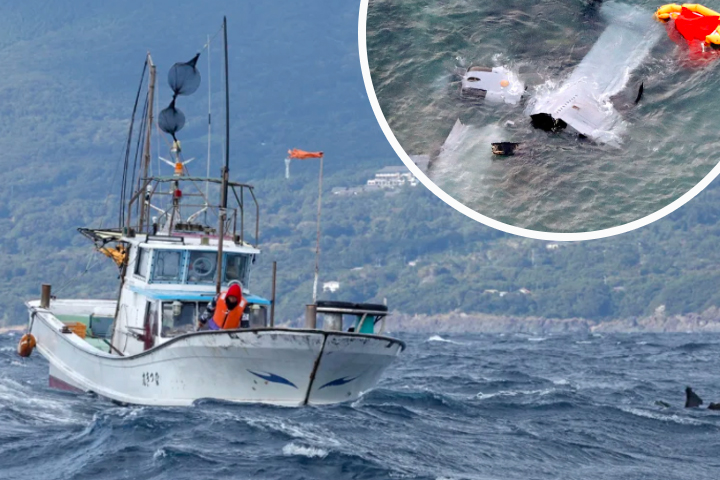


The remains of one American have been retrieved by search and rescue workers. Air Force Airman who were aboard a CV-22B Osprey that crashed off the coast of Japan on Nov. 29, but they are still looking for seven other Airmen who were on board at the time of the disaster.
“Seven Airmen are in DUSTWUN status meaning ‘duty status-whereabouts unknown.’ At this time, we can confirm one set of remains has been recovered,” the Air Force Special Operations Command (AFSOC) announced in a press release on Friday, Dec. 1.
The dead Airman was not immediately identified by AFSOC.
The CV-22B Osprey, belonging to the 53rd Special Operations Wing out of Yokota Air Base in Japan, was on a regular training operation off the coast of Yakushima Island when it crashed into open ocean. At this moment, the condition of the remaining flight crew is unclear.
The search and rescue mission for the remaining flying crew has entered its third day.
The US military, Japanese Self-Defense Forces, the Japan Coast Guard, local law enforcement, and Japanese civilian volunteers are all aiding with the ongoing search. The Pacific Air Forces, the United States Pacific Fleet, the United States Marine Corps Forces, Pacific, Special Operations Command Pacific, the 353rd Special Operations Wing, the 18th Wing, and the United States Coast Guard are among the US military components helping in the search. The 1st Special Forces Group of the United States Army.
AFSOC extended its appreciation to all US military forces and Japanese partner elements that aided in the search.
The precise circumstances of the Wednesday flying crash are unknown.
According to Kyodo News, citing Kagoshima prefectural officials, the V-22's left engine caught fire before crashing. According to Japan Coast Guard spokeswoman Kazuo Ogawa, the plane was on its way to Okinawa's Kadena Air Base when it experienced a difficulty and attempted an emergency water landing.
The V-22 Osprey is a tiltrotor, a hybrid aircraft that can pitch its two rotors skyward for vertical take-off, similar to a helicopter, but can then rotate the rotors forward to function like propellers on a plane, allowing it to achieve greater cruising speeds than a helicopter. The CV-22 version, according to an Air Force data sheet, can achieve speeds of over 280 knots (322 miles per hour).
Following the disaster, the Japanese Self-Defense Forces, which operate a small number of V-22 versions, ceased Osprey flights on Thursday.
Taro Yamato, a senior Japanese defense ministry official, told a parliamentary panel that the Japanese military chose to halt operations until defense authorities could establish information of the Wednesday crash and assess the safety of ongoing V-22 operations.
The Japanese government also requested that the US military confine its V-22 missions in and around Japan to those involved in the continuing search efforts. The United States Navy, U.S. Marine Corps, and U.S. The Air Force, Navy, and Marine Corps all have their own variants of the Osprey aircraft.
At a news conference on Thursday, Deputy Pentagon news Secretary Sabrine Singh stated that the US has not received any official requests from the Japanese side to cease V-22 flights.
“As of right now, we are still continuing to operate the Osprey aircraft. We have a commitment to safety,” Ms. Singh said. “There is an investigation that is currently determining and looking into what exactly happened with this aircraft and the mishap. Should that investigation yield in results that require the department to change anything about the Osprey or to take additional steps, we will certainly do that, but at this time, I’m not going to get ahead of that investigation and its process.”
Wednesday's tragedy was the sixth deadly mishap involving a V-22 operated by the United States since 2012. In August, three US Marines were killed and 20 others were injured when their MV-22 Osprey crashed in Australia.
In June 2022, five US Marines were killed in a plane crash in California.
Four US Marines were also killed in an MV-22 collision in Norway in March 2022.